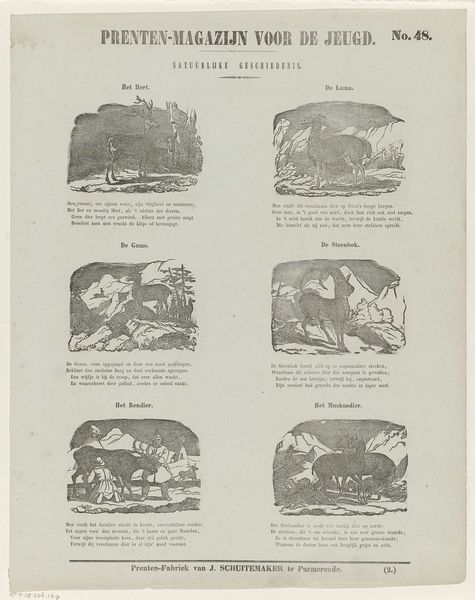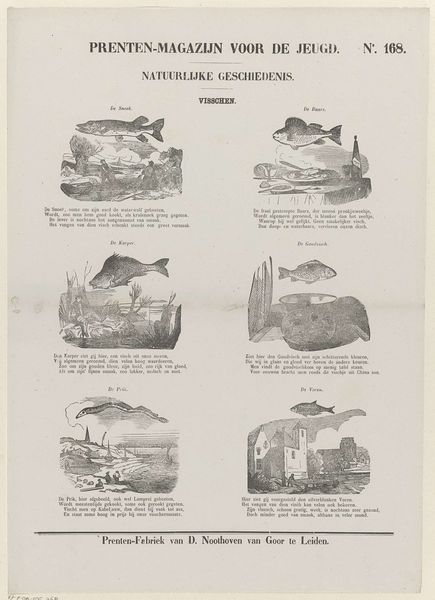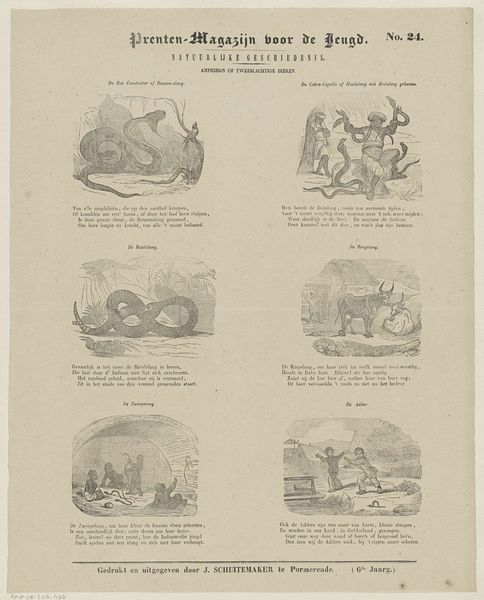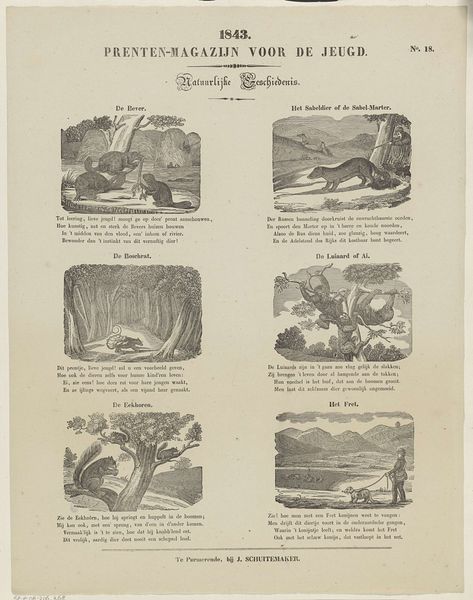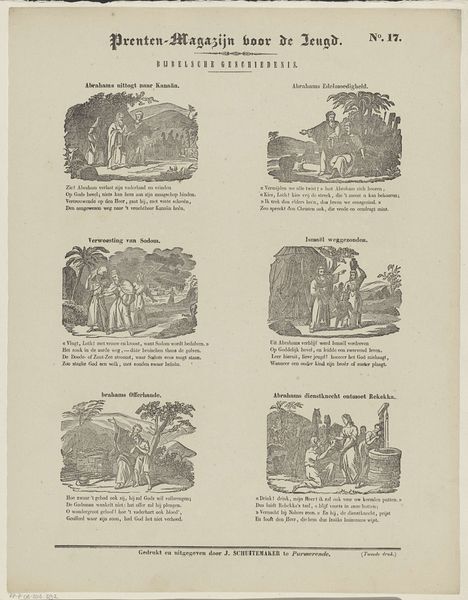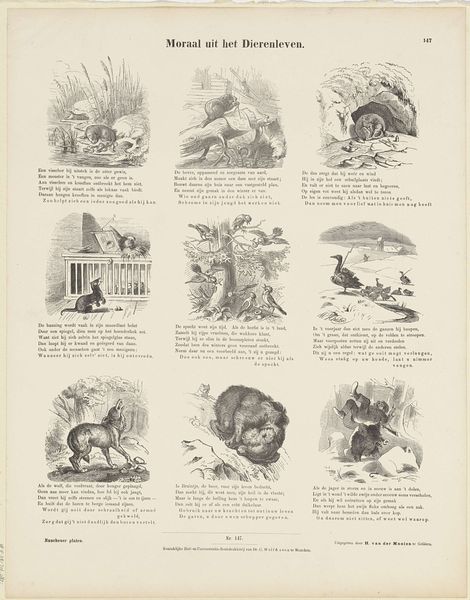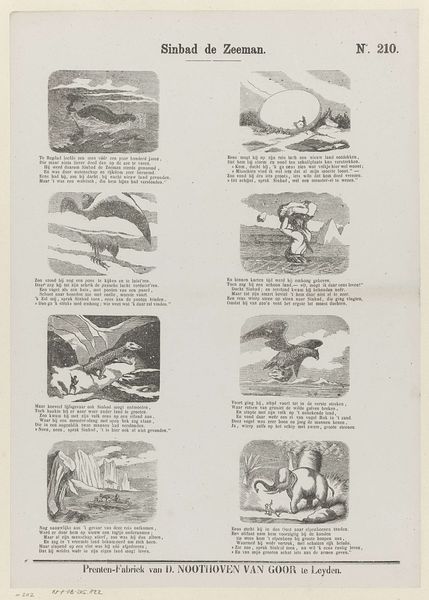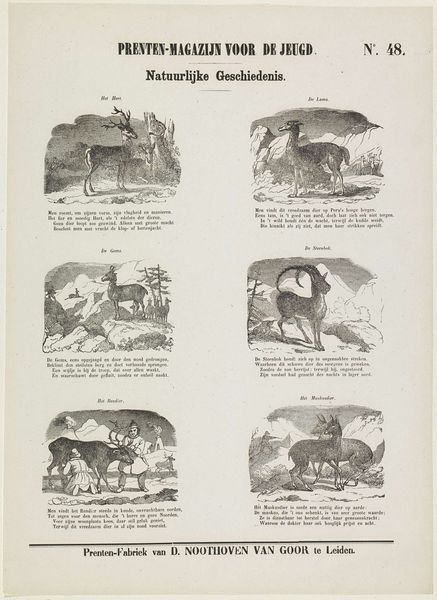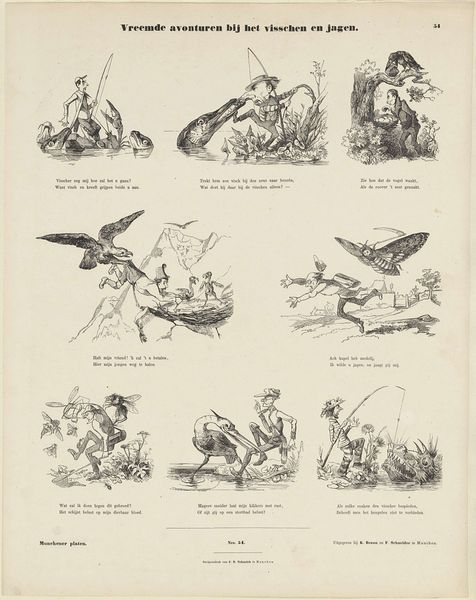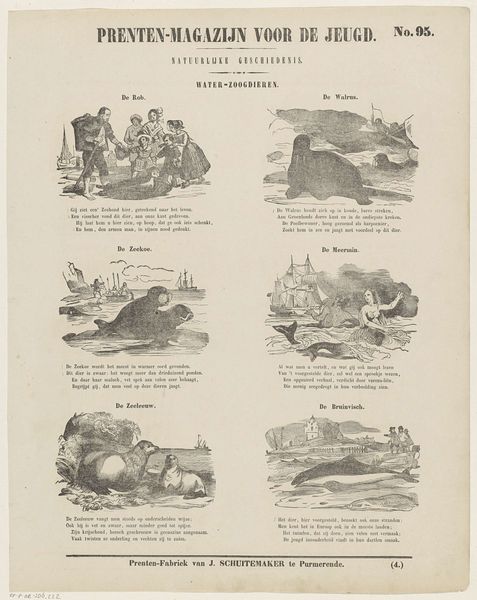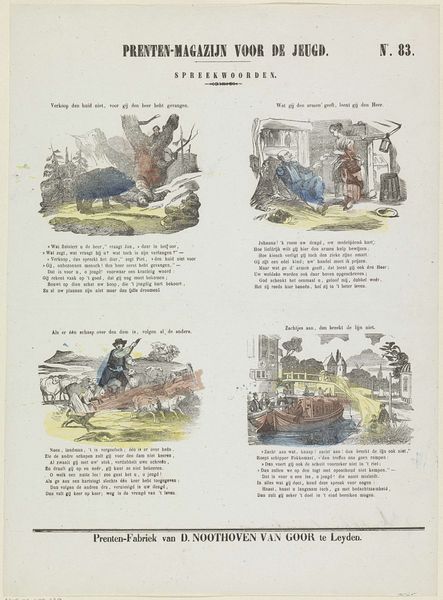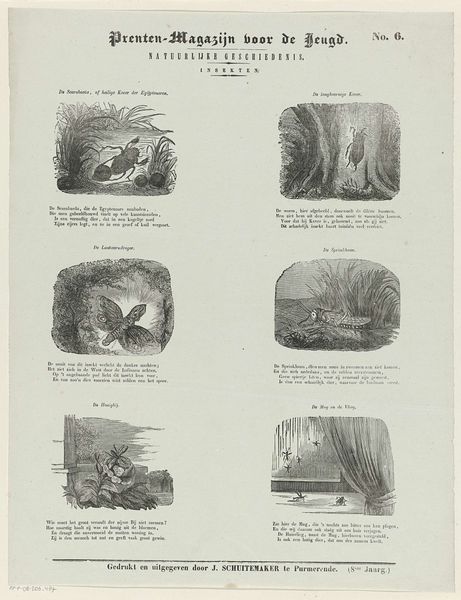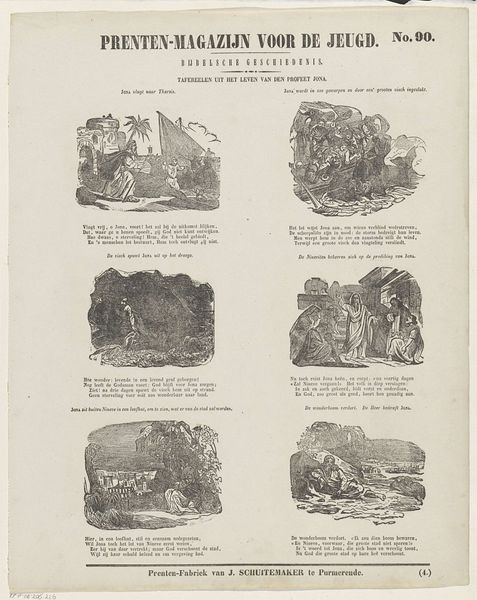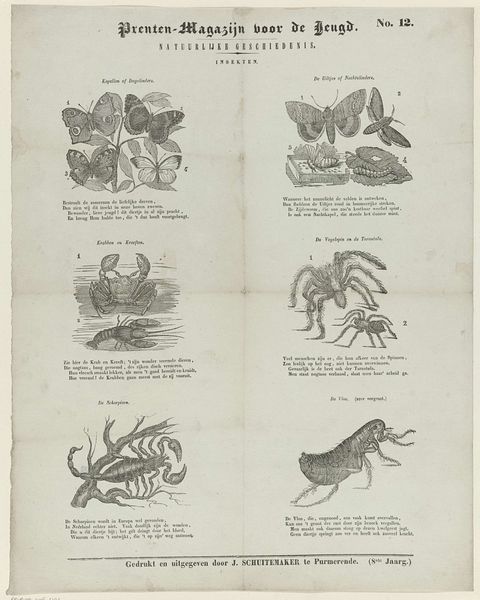
drawing, print, woodcut, engraving
drawing
narrative-art
animal
woodcut
naturalism
engraving
Dimensions: height 430 mm, width 331 mm
Copyright: Rijks Museum: Open Domain
Curator: This print, entitled "Dieren," was created around 1850 by Jan Schuitemaker. It features several vignettes of different animals. It’s rendered in a style that mixes naturalism with, perhaps, the demands of mass production at the time. Editor: Immediately striking is its stark monochrome palette and the almost taxonomic approach to displaying each creature. A certain density to the compositions suggests an intricate world, yet the rendering feels quite economical. Curator: Indeed, its format points to dissemination rather than pure artistic expression. Schuitemaker used a variety of printmaking techniques, most notably woodcut and engraving. Note the distinct textures achieved—the hatching gives form and shadow. Each section features an animal and a descriptive block of text in Dutch. Editor: And these small texts, positioned beneath the image, speak volumes about this work. While there's an attempt to capture a naturalist style, what’s intriguing to me is the labor-intensive process behind this apparent accessibility. Imagine the manual work—cutting these blocks, setting the type, printing these sheets. It reframes my perception entirely. Curator: The print clearly belongs to a tradition of natural history illustration meant for public instruction. Note the slightly fantastical element; a nod towards more artistic concerns than accurate scientific record, perhaps? Observe also how this is called 'Prenten-Magazijn voor de Jeugd'. The function is also made explicit with the title; a print magazine for youths. Editor: Exactly, so we have the constraints of accessibility married with, one suspects, the pressures of commerce too. Each vignette had to serve its didactic and economic function efficiently. That it does so with some skill only underscores my appreciation for the artist/artisan's hand. It would be great to know more about his material conditions, what his workshop looked like, and who worked alongside him. Curator: For me, the effectiveness comes from the composition—the animals are dynamically posed, seemingly bursting from their little frames. It successfully marries scientific observation with artistic dynamism. Editor: I appreciate how our analysis of the material and the method has reframed how we read these printed images today, perhaps opening them up to more interpretations that are traditionally foregrounded in this style.
Comments
No comments
Be the first to comment and join the conversation on the ultimate creative platform.
